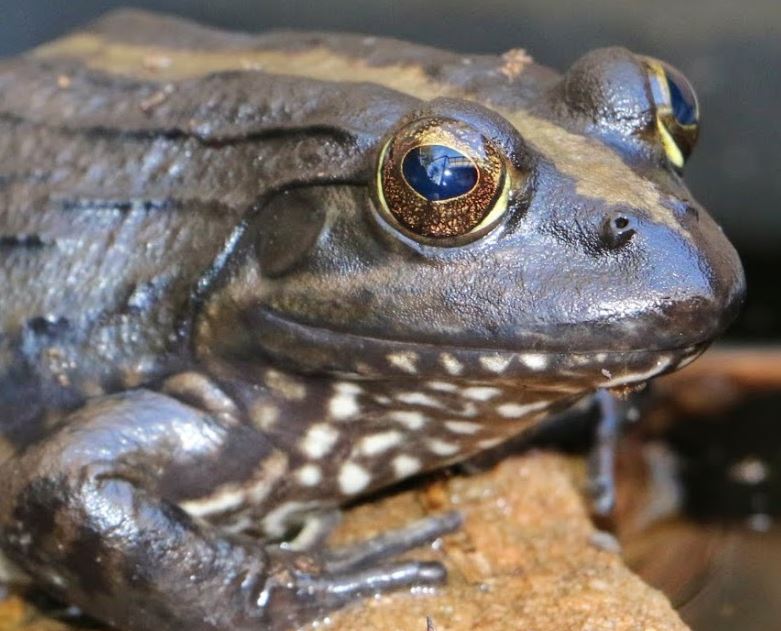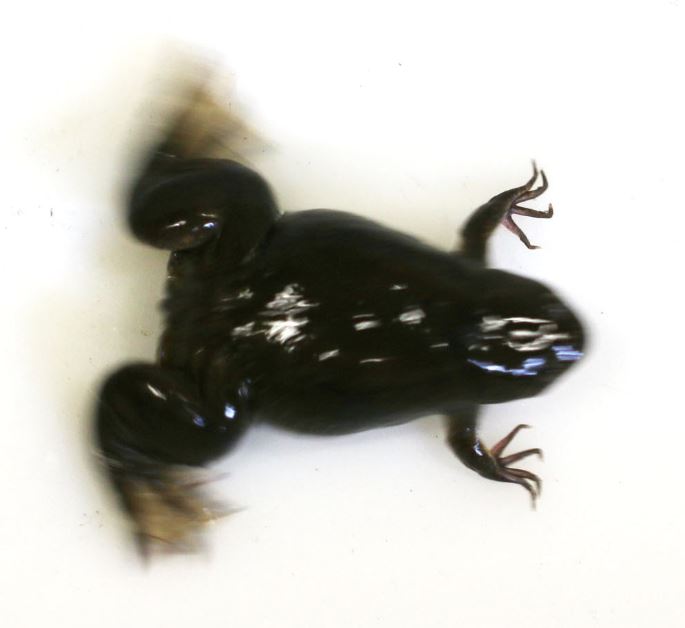Species names (Latin or common), taxonomic authorities and acceptable conventions
There are quite a few conventions that it’s worth knowing about when it comes to using names. When talking about common names, it is a bit of a quagmire as there are few standards that are followed by all journals. Scientific names can also be in great flux, but at least there is definitive help. Here I will outline my interpretation of what’s what in using names.
Scientific names
There is only one valid scientific name for a species. This is expressed in a binomial: two names, first the genus (with an initial capital letter) and then the species name (lower case). This name is italicised by convention (or in some cases underlined). The single name is a hard rule as taxonomy can’t survive in any other way. The most recently published version is the one to use, but happily with both reptiles (http://www.reptile-database.org/) and amphibians (http://research.amnh.org/vz/herpetology/amphibia/) there are well curated databases to which you can refer for the latest taxonomic treatments. My suggestion is that you defer to these (with acknowledgement) and you won’t go far wrong. If you do this early on in your thesis, you may need to update it later.
Consider Mac’s example:
When Mac started his PhD in 2013 he worked on three species, and over time these changed so that at various points in his thesis he had the following combinations:

|

|

|
| Amietophrynus rangeri | Amietia angolensis | Xenopus laevis |
| Amietophrynus rangeri | Amietia quecketti | Xenopus laevis |
| Sclerophrys capensis | Amietia delalandii | Xenopus laevis |
The taxonomy of two species changed such that he had to constantly revise the names in his thesis. Luckily, he could simply conduct a “replace all”, but it did become quite confusing. The lesson is that if you want to avoid this, work on Xenopus laevis or conduct your PhD in as short a time as possible!
In taxonomic papers, and certain journals with a taxonomic focus, there is an insistence that you cite the “taxonomic authority” after the species name when used for the first time. This is essentially a citation in which you acknowledge the original description that accompanies the name. Let’s take Mac’s examples again:
Sclerophrys capensis Tschudi, 1838
Amietia delalandii (Duméril and Bibron, 1841)
Xenopus laevis (Daudin, 1802)
It might seem that there’s a mistake above, because Tschudi, 1838 isn’t in brackets. This is actually deliberate. Tschudi, 1838 isn’t in brackets because the genus name hasn’t changed since the description by Tschudi placed S. capensis in Sclerophrys in 1838. But it is clear in the table above that the genus name did change to Amietophrynus, and it was recognised under a different species name (A. rangeri). Unlikely as it may seem, the original description of the species was by Tschudi in 1838, but this was long forgotten (or ignored because the type specimen was so poorly preserved), and the species was regularly referred to as Bufo rangeri. When the genus Bufo was broken up into lots of newly named genera by Frost et al 2006, Tschudi’s description was once again disregarded. However, in 2016 new work on the type specimen revealed that it was the same as Amietophrynus rangeri, but because Tschudi’s description was older, the taxonomy deferred to the rule of precedence. If you want to read more about it, you can look at all the changes on the AMNH database.
To clarify, the use of brackets around the taxonomic authority only happens when the species is no longer in the genus in which it was originally placed by the person who described the species. Daudin (1802) originally described Bufo laevis, and Duméril and Bibron (1841) originally described Rana delalandii.
The generic name of a Latin binomial is often abbreviated to the first letter (e.g. X. laevis). This should only be done once it is well established in your writing what the full name is. Or, in other words, you should refer to the species in full on the first mention, and then switch to the abbreviation. Because sentences shouldn’t start with an abbreviation, you might need to relax this from time to time. You also need to treat the abstract as a stand-alone document in this respect. You might find that you have two species, which belong to different genera that share the same first letter. In this case, most authors use a different abbreviation: for example Ap. rangeri and At. angolensis. Keen readers would have noticed that Mac doesn’t have this problem any more!
I have seen some comments that suggest that once a generic name is abbreviated in a paper, it shouldn’t be written in full again. In my opinion, this is rather a silly idea. It is up to you (the writer) to avoid ambiguity. If there is no ambiguity, then you may write the species name in full to increase the readability of your piece.
Lastly, there is a convention that when referring to the generic name alone you should always mention that it is a genus. So you shouldn't write about those Bufo which hop around the house, but instead about those members of the genus Bufo that hop around the house.
Common names
Common names have a different set of problems to those that we’ve seen for scientific names. These are largely focussed on: what name to use, and whether or not to capitalise the common name.
- What name to use - This is tricky. My suggestion would be to take the most commonly used common name, as that’s likely to be the one that most people will recognise. However, it’s not always that simple and because there’s no “correct” common name, you have some leeway to choose the one you prefer.
Let’s take an example: The African Clawed Frog is a very widely used name for Xenopus laevis which is used all over the world as the model amphibian. However, African Clawed Frogs is also the commonly accepted name for the entire genus, Xenopus. Thus, shouldn’t we avoid using this for the species X. laevis? So, let’s look at the alternatives. Frost (2017) lists 13 common names for this species. Names such as Platanna and Common Platanna are difficult to use in scientific papers as they are only regularly used in South Africa. Clawed Toad is not appropriate, as it is not a toad, a confusion that dates right back to Daudin’s 1802 description. Clawed Frog has the same problem as African Clawed Frog, and other variants such as Upland Clawed Frog and Smooth Clawed Frog also seem inappropriate as this species is neither confined to uplands or the only member of the genus which is smooth (although ‘laevis’, the species name, does mean ‘smooth’).
There has been a recent movement to formulate common names into genera (or even families) such that the specific common name takes on a specific epiphet of the generic or familial common name. In a world of stable taxonomy (such as that enjoyed by ornithologists), I can understand that this is possible. But imagine the requirements in common name changes for Mac in his thesis over only a few years. Surely the useful thing about common names is that they are used commonly by normal people who don't worry about taxonomy? If we insist on common names constantly changing, don't we risk alienating the public?
I eventually decided to use ‘African Clawed Frog’ as this is the most widely recognised common name for this species. It does become an issue when writing about X. laevis and other Xenopus species (as we have), but we’ve managed to resolve this without too much difficulty.
- Should common names have capitals?
View 1. Common names are proper nouns and proper nouns start with capitals. The Western Leopard Toad is not any toad, and the African Clawed Frog isn’t any frog. The Cape platanna is any platanna living in the Cape, but the Cape Platanna is Xenopus gilli! In this last example, you can see how capitalisation reduces ambiguity and differentiates between adjectives and nouns.
View 2. Common names are not formal names (like scientific names) so why does it matter? Many journals do not capitalise common names and insist on lower case unless they are proper nouns, like African in African clawed frogs. This seems to have arisen from editors who dislike superfluous capitalisation.
On balance, I’d say that it’s likely that your usage will be dictated by the policies of the journal.